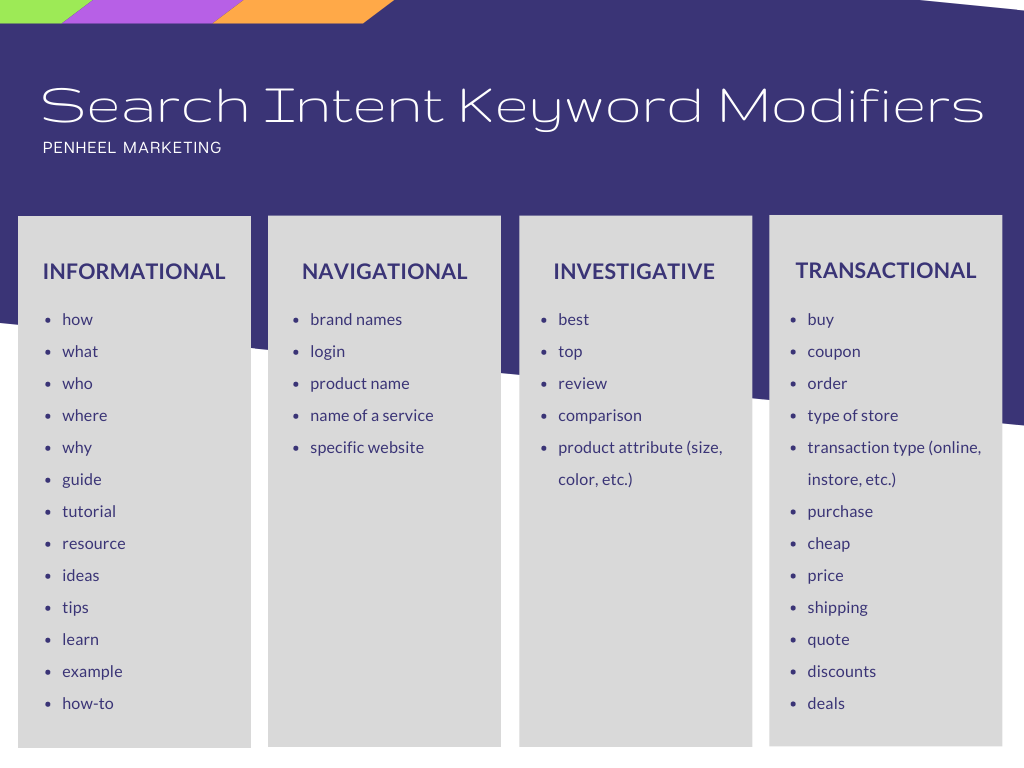Powering On-Page SEO and PPC to Boost SaaS Website Traffic
The rise of AI set off a series of shockwaves in the SEO services industry while handing Google the first serious threat in years to its preeminence. In response, the search and web ads giant is revamping its search engine results page (SERP).
Many companies are re-evaluating their marketing strategies, from social media marketing to SaaS SEO strategy. From this point on, it will be all the more essential to acknowledge Google’s changes and the role of AI in powering on-page search engine optimization (SEO) and Pay-per-click (PPC) ads to boost SaaS website traffic.
Google’s New SERP and Search Generative Experience (SGE)
Google’s new AI search experience, Google Search Generative Experience (SGE), integrates AI into the SERP. Instead of offering organic search results and featured snippets above the fold, organic results are further down the page and may impact non-paid search traffic and click-through rates.
While changes are still in play, the upshot for SaaS businesses is that Google’s search results pages will probably send less direct traffic to websites. At the same time, increased use of AI in an already competitive space will likely drive up keyword and ad prices.
Let’s look at an update.
What is On-Page SEO?
On-page SEO refers to optimizing elements on a website to improve its visibility, technical performance, and ranking in search engine results. On-page SEO now leverages AI tools for optimizing keywords, content relevance, and enhancing user experience.
Improving On-Page Search Rankings
With so much pressure to adapt to an AI marketing strategy, it can feel overwhelming where to start. A good strategy is to focus on shoring up the SEO basics, starting with technical SEO. The good thing about technical SEO techniques is that they give marketers a checklist of specific actions to improve SEO.
Technical SEO checklist for better search engine rankings
Technical SEO focuses on improving a website’s speed, security, mobile-friendliness, and user experience. Here are a few website elements that search engine bots evaluate:
- Positive user experience: A positive user experience can lead to better search engine rankings; a poor user experience can negatively impact SEO efforts.
- SaaS Content optimization: Optimizing content for organic traffic from specific search engines can help you rank higher in search results.
- Canonicalization: This technical SEO approach involves choosing a preferred URL for a website’s content to avoid duplicate content issues, which can harm search engine rankings.
- Mobile-friendliness: Good mobile UX is a ranking signal on most search engines, including Google and Bing. Mobile-friendly sites will show up higher in search results.
- Page speed: Page and site speed are primary considerations for search engines. A technical SEO audit can help pinpoint where to improve on-page optimization.
- Crawling and indexing: When search engines can crawl your website easily and quickly, it leads to better indexing and ranking of your website in search engine results pages (SERPs). Create XML sitemaps, use formatting and correct url structure to help search engines quickly glean and index content.
With an optimized on-page experience, your pay-per-click conversions should improve, too. Let’s go over some basics.
Effective SaaS Content Marketing and SEO
Content marketing is essential to online marketing efforts. Here are some tips for building strategies and creating content to fuel SaaS growth.
- Design a content strategy with high-quality content conforming to Google’s EEAT framework.
- Content creation should include blog posts, guides, webinars, and a case study of your ideal client’s success. Produce an “ultimate guide” of informative content addressing your target audience’s common questions. Be intentional about link building and internal links.
- Optimize content for users and search engines: Use relevant keywords naturally throughout your content in meta tags, title tags, and meta descriptions. Ensure content is well-structured and easy to read. Avoid keyword stuffing.
- Promote content across channels: Besides internal linking, share your content on social media, guest blog on industry websites, share case studies, and utilize email marketing to reach a wider audience.
What is PPC?
PPC is a digital advertising model that drives paid website traffic. Instead of free organic traffic, advertisers pay a fee each time someone clicks one of their ads. PPC strategies are evolving to leverage AI’s ability to analyze large data sets for precise targeting and bid management.
AI and PPC Marketing – Good and Bad News
AI makes some things harder even as it helps with other tasks. Keyword strategies are what fuel PPC marketing. The bad news is that AI is fueling more keyword competition, which drives costs. The good news is that all marketers can access new tools to help improve targeting, ad copy, and ad campaign efficiency.
PPC Strategies: Keyword Ideas for Targeting High-Intent Buyers
Different keywords map the buyer persona’s different awareness stages in the marketing funnel. Organizing content topics and long-tail keywords around search intent is a simple way to organize your approach.

Using Google Ads for High-Buying Intent Terms
By carefully selecting keywords and terms that prospective customers use when they’re ready to buy, a SaaS company or SEO agency can position your ads to capture this valuable audience.
Generally, it’s more cost-effective to run paid ads in the transactional phase of awareness when the prospect is highly intent to purchase. Use high-intent seed keywords within keyword phrases to attract users ready to pull out their credit cards. Examples include words such as buy, price, deals, and shipping.
Focusing on targeting and personalization is critical if your goal is to maximize ROI with targeted PPC campaigns. If you’re thinking that this can get complicated, you are right. Funnel Envy can help.
SaaS SEO and PPC Best Practices in 2024
On-page SEO and PPC can increase website traffic, but each has different strengths. SEO primes long-term growth, and PPC provides an immediate impact.
The magic balance? Combine them both! Use PPC data for SEO targeting, optimize both channels’ landing pages, and leverage PPC boosts for new content.
Here are the best practices to use as a PPC and SaaS SEO guide in 2024. These suggestions are prioritized from most important to least important. Every business differs, so you should adjust based on your marketing and customer acquisition goals.
- Align goals: Ensure both efforts support shared objectives and use data from each to inform the other.
- Optimize for user intent: Conduct thorough keyword research and create content for targeted landing pages.
- Prioritize mobile experience: Design and optimize for mobile users and address technical SEO issues.
- Focus on quality content: Create engaging SEO content and compelling ad copy for PPC. Make sure your blog includes high-quality backlinks.
- Utilize data and analytics: Track performance with tools like Google Analytics. Conduct A/B tests and iterate strategies.
Landing Pages
On-page SEO and PPC for SaaS landing pages deserve special mention. At the landing page level, develop targeted landing pages for each PPC campaign and SEO keyword cluster to match the specific user intent behind the search query.
Focus on a clear value proposition and concise copy highlighting the benefits of your SaaS solution and addressing user pain points. Finally, optimize for conversions with an intuitive user experience, clear calls to action, and fast page load times.
On-page SEO and PPC Strategies: Drive Qualified Traffic
With best practices guiding your overall plan, here are some specific strategies.
Keyword Strategy, Research, and Targeting
Organize target keywords by intent and customer journey. Use a broad keyword list to cover general industry searches, niche keywords to target specific stages, and branded keywords to capture users already aware of your brand.
Analyze competitor’s SEO and PPC for keyword ranking factors. Identify high-performing keywords and leverage them in your campaigns while finding gaps and targeting underserved niches.
Research seasonal and trending topics. Tailor your keyword usage to current industry trends and seasonal events to capture timely traffic.
Leveraging PPC for Qualified Traffic
All traffic is not created equal. Besides converting sales, another benefit of PPC is it can help you qualify your website traffic. Here are some ideas:
- Smart bidding strategies: Utilize automated bidding options like target CPA or ROAS to optimize ad spend and focus on conversions.
- Retargeting campaigns: Target website visitors who haven’t converted yet with relevant ads reminding them of your product.
- Dynamic search ads: Automatically generate ads based on your website content, ensuring relevance to user searches.
- Experiment with different ad formats: Test video, image, and carousel ads to see what resonates best with your target audience.
- Track and analyze data: Regularly monitor the performance of your SEO and PPC campaigns, using insights to adjust strategies and optimize for better results.
Remember that building a successful SaaS SEO and PPC strategy is ongoing. Experiment, test, and refine your approach based on data to attract qualified traffic and convert visitors into paying customers.
Moving Ahead with On-Page SEO and PPC
Anyone in the business can tell you digital marketing wasn’t easy even before AI. While AI tools are opening up significant advantages, they are also introducing new challenges, not to mention a considerable learning curve.
If you are wondering where to start with on-page SEO and PPC to boost your SaaS website traffic, Funnel Envy can help. We have used AI tools before the ChatGTP era and are experts in new integration and possibilities. You don’t have to do this alone. Reach out today to get started.

